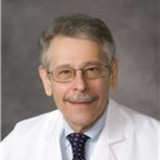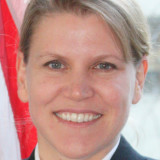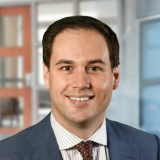The American College of Cardiology just concluded its annual meeting, ACC25, in Chicago from March 29-31, 2025. This was a special meeting as it marked the 75th anniversary of the ACC.
First, a brief history of the ACC: It was founded by 13 New York cardiologists in 1949, led by Drs. Franz Groedel and Bruno Kisch established a professional home for clinical cardiologists emphasizing education, evolving science, and research. In 1950, the first ACC Trustees were chosen to lead the organization under the first two presidents: Groedel followed by Kisch. The first meeting of the ACC held in December 1951 in New York City had 400 attendees. Membership in the College rapidly grew to hundreds for this opportunity for high-quality education of advancing clinical research. The ACC has continued to grow, now representing approximately 60,000 members, including representatives of all aspects of the cardiology care team.
To celebrate the 75th anniversary, the evening before the scientific meeting, there was a Gala at the Field Museum in Chicago. A black-tie dinner recognized the many individuals and initiatives the ACC has championed over its tenure to improve health care across the patient social spectrum. Leaders recognized included Dr. Nanette Wenger, who pioneered the recognition and treatment of aspects of women’s cardiovascular health. Other programs, including international education, mentorship, and scholarships, were recognized with additional donations at the event, raising over a million additional dollars. The celebration marked a recognition of achievement while focusing on advancing programs going forward.
While actual annual meeting attendance numbers are always hard to obtain, one ACC staff member noted that this year’s attendance was, for the first time since the COVID-19 pandemic, equal to pre-pandemic levels. The venue (McCormick Center in Chicago) was large but well-arranged so that access to events was easily accomplished. Participants were pleasant and not frustrated, providing a positive vibe throughout the meeting.
Noteworthy was a program reorganization. The cutting-edge science presentations included ample discussion for optimal education. However, the ACC recognized that scientific presentations are immediately available online without necessitating live meeting attendance, and enhanced opportunities for meeting attendees to interact made an in-person presence so important. To foster networking, the ACC better centralized the Heart2Heart stage (used for more “soft science” such as women cardiologists’ issues, work-life balance, etc.), which was surrounded by multiple lounges that hosted meetings and opportunities to connect. In addition to the traditional Faculty Lounge, there was an FACC (Fellows) Lounge, both served free lunch each day and coffee and tea throughout the meeting. The overall area was spacious, providing additional seating and workspaces for all attendees. Discussions and presentations were available in multiple smaller lounge areas.
An example of the type of presentations available at the Heart2Heart Stage was a very well-attended session provided by the Senior/Advanced Career Cardiologist Council entitled “Are Cardiologists Practicing Too Long? Views from Mid and Early Career Cardiologists.” This provided an excellent venue for an open discussion regarding issues for senior cardiologists, such as continued practice if capable, testing for competency, and reduced/no night call. Reduced night calls for senior cardiologists may be equivalent to work-life balance for earlier-career cardiologists. Overall, there were succinct topic presentations with excellent discussion among the panelists and the audience. Attendees appreciated the session, which addressed critical issues relevant to late-career clinicians.
Lest one forgets, the original and continuing goal of the ACC is research to advance knowledge of clinical medicine. To that end, the meeting was a giant success. It is impossible to summarize all of the science, but a few interesting studies are worth highlighting.
Fluid Restriction in Heart Failure vs. Liberal Fluid Uptake - FRESH-UP
A clinically relevant study demonstrated unrestricted fluid intake for patients with heart failure had no increase in adverse events compared to fluid-restricted patients (1500 ml per 24 hours) but experienced less thirst distress, a win for patient comfort and convenience.
Altshock-2: Early IABP Implantation Does Not Improve Outcomes For HF-CS
In a small study stopped early by the DSMB for futility, patients with cardiogenic shock secondary to heart failure failed to show benefit for IABP use compared to standard care regarding survival or bridge-to-heart replacement therapy. As in other shock trials, enrollment was challenging, leading to low enrollment, which challenged the results.
BHF PROTECT-TAVI: CEP Device Shows No Effect on Stroke Risk After TAVI
In a randomized trial of 7,635 patients undergoing TAVI in the UK, there was no difference in the risk of stroke, comparing a cerebral embolic protection device with no protective device. Likewise, secondary endpoints of all-cause mortality and disabling stroke were not different as well. However, newer protection devices might be effective, particularly if specific profiles for benefit are defined.
These trials represent a tiny sample of the science at ACC25. It was a great meeting to celebrate the success of the ACC over 75 years and look to an ever increasingly effective organization continuing to support the clinical heart team for improved cardiac outcomes.
Dr. Vetrovec has no relevant conflicts of interest to report.
Image by ElenaLux / Getty Images







